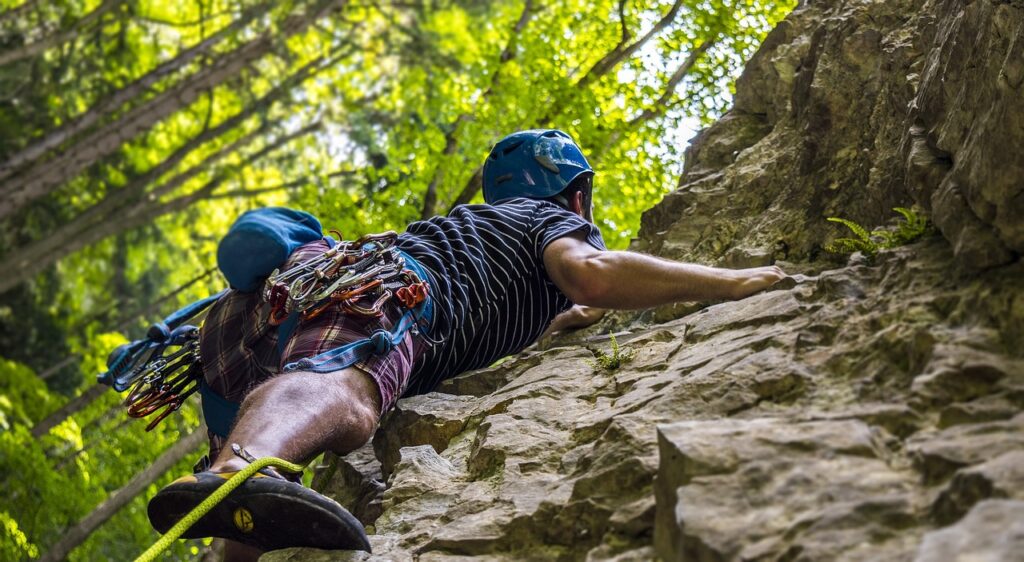?
The Science of Climbing Holds
Climbing holds come in a variety of shapes and textures, each demanding different engagement from our hands and fingers. The primary types include:
- Crimps – Small edges requiring fingertips to press down and engage flexor tendons.
- Slopers – Rounded holds demanding friction, palm contact, and body positioning.
- Pinches – Vertical or outward-facing holds requiring both finger and thumb opposition.
- Jugs – Large, positive holds that allow for full-hand gripping and often serve as rests.
- Pockets – Circular holds that engage a limited number of fingers, stressing specific tendons and pulleys.
The angle, texture, and orientation of a hold influence how much force a climber must generate to stay on the wall. Understanding these forces can help climbers develop better grip strength, endurance, and injury prevention strategies.
Grip Strength: The Key to Unlocking Harder Climbs
Grip strength is the foundation of climbing performance. It comes in three primary forms:
- Crushing Grip – Used for pinches and compression moves, engaging the entire hand.
- Support Grip – Important for jugs and hanging endurance, requiring sustained isometric contraction.
- Pinching Strength – Critical for climbing on volume-heavy gym routes or outdoor rock features.
Training for grip strength involves:
- Hangboard training – Hanging from various edge sizes to develop finger tendon strength. [Again]
- Campus board workouts – Explosive pulling exercises that build contact strength. [Again]
- Dead hangs and weighted hangs – Gradual overload to increase grip endurance. [Again]
- Grip trainers and pinch blocks – Targeted exercises for finger and thumb strength. [Again]
Biomechanics and Injury Prevention
The human hand is a complex system of tendons, pulleys, and muscles that work together to generate grip force. However, improper grip technique can lead to overuse injuries, such as:
- Tendon strain – Overloading tendons without sufficient recovery.
- Pulley injuries – Overuse or sudden loading of the finger flexor tendons can result in A2 pulley tears.
- Over-gripping fatigue – Excessive force application leads to unnecessary energy expenditure.
To prevent injuries, climbers should incorporate antagonist training, proper warm-ups, and rest days into their routine. Investing in finger massagers, therapy putty, and rehab bands can also aid recovery. [Again]
Applying Science to Your Training
Understanding the physics of grip force, friction, and leverage allows climbers to optimize their movement efficiency. The more efficiently a climber engages with a hold, the less energy they expend. By training grip strength scientifically and respecting injury prevention principles, climbers can continue to push their limits without setbacks.
Are you ready to chase gravity? Upgrade your training tools and grips today! [Again]

Pingback: History of Indoor Climbing - gearyourgrip